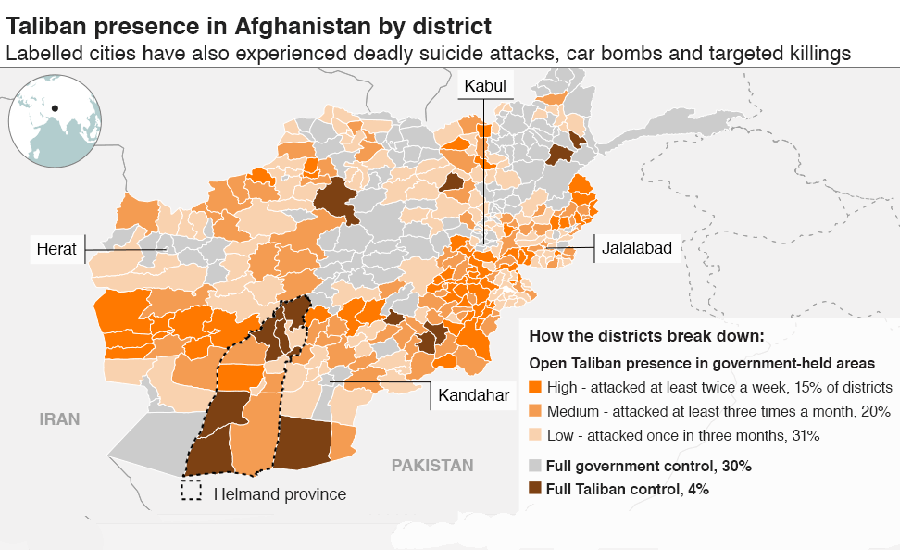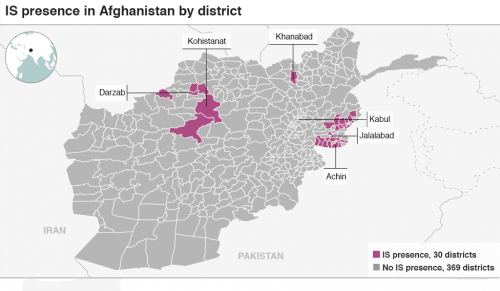Taliban active in 70 percent of Afghanistan, study finds

WASHINGTON (Web Desk) - The Taliban are openly active in 70 percent of Afghanistan’s districts, fully controlling 4 percent of the country and demonstrating an open physical presence in another 66 percent, according to a study has found on Wednesday.
Months of research across the country show how areas the Taliban threaten or control have surged since foreign combat troops left in 2014.
The study estimate, which it said was based on conversations with more than 1,200 individual local sources in all districts of the South Asian country, was significantly higher than the most recent assessment by the NATO-led coalition of the Taliban’s presence.
The coalition said that the Taliban contested or controlled only 44 percent of Afghan districts as of October 2017.
The Afghan government played down the report, saying it controls most areas. But recent attacks claimed by Taliban and Islamic State militants have killed scores in Kabul and elsewhere.
Afghan officials and US President Donald Trump responded by ruling out any talks with the Taliban. Last year Mr Trump announced the US military would stay in the country indefinitely.
Afghanistan has been reeling over the past nine days from a renewed spate of violence that is adding scrutiny to the latest, more aggressive US-backed strategy to bolster Afghan forces battling the Taliban in a 16-year-old war.
A bomb hidden in an ambulance struck the city centre and killed more than 100 people, just over a week after an attack on the Hotel Intercontinental, also in Kabul, which left more than 20 people dead, including four US citizens.
Although the report counted 399 districts in Afghanistan, the NATO-led force counted 407 districts. The reason behind the discrepancy was not immediately clear.
The study said the Afghan government controlled 122 districts, or about 30 percent of the country. Still, it noted that did not mean that they were free from Taliban attacks. “Kabul and other major cities, for example, suffered major attacks - launched from adjacent areas, or by sleeper cells - during the research period, as well as before and after,” the report said.









